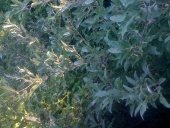





Sfumato Farm | www.sfumatofarm.com
An experiment in homesteading and permaculture outside of Charlottesville, Virginia, USA
 1
1




 1
1




 1
1




Come join me at www.peacockorchard.com




Sfumato Farm | www.sfumatofarm.com
An experiment in homesteading and permaculture outside of Charlottesville, Virginia, USA
 1
1




 1
1




 1
1




I think having land and not ruining it is the most beautiful art that anybody could ever want to own. - warhol




Sfumato Farm | www.sfumatofarm.com
An experiment in homesteading and permaculture outside of Charlottesville, Virginia, USA
 1
1




Homesteading in Central Virginia
Our Website





Sfumato Farm | www.sfumatofarm.com
An experiment in homesteading and permaculture outside of Charlottesville, Virginia, USA




John Athayde wrote:To invade or not to invade, that is the question....
I’m in zone 7B in Virginia (just outside of Charlottesville in an area called Stony Point).
Looking to do a NAP style setup (from “The Permaculture Orchard) and trying to find the best nitrogen fixers for the area. I was looking at this list for eastern woodlands (http://www.perennialsolutions.org/all-nitrogen-fixers-are-not-created-equal) and was wondering about Russian Olive and Black Alder.
the VA Dept of Forestry lists Russian Olive (and Autumn Olive) as invasive and is pretty anti-planting of it. [Insert whole “if you fix nitrogen, please invade me!” thing here]. Black Alder seems to have been introduced in Colonial times, so it’s quasi-native at this point.
We already have the following moderate to high nitrogen fixers on the property (pretty extensively in both cases)
* Black Locust
* Autumn Olive
We have some other low volume fixers in the tree and shrub realm, but I’m looking for something that would ideally give me or wildlife an edible yield. This will be going in on an eastern facing slope that is currently an open paddock that hasn’t been browsed for two years (and has pretty good grass cover).
So, QUESTION 1: should we invade with Russian Olive, knowing that it can spread like wildfire? or stick with something a bit more safe/tame/already on the property?
QUESTION 2: We had also discussed doing what I’ll call nAnP, which is using, say, a serviceberry low level between alternating Apple and Pear/Plum/Cherry. Wouldn’t have as much separation benefits as the pure NAP, but gets things tighter together.
Any thoughts/suggestions/berating?
Cheers,
J

|
Don't play dumb with me! But you can try this tiny ad:
Learn Permaculture through a little hard work
https://wheaton-labs.com/bootcamp
|



